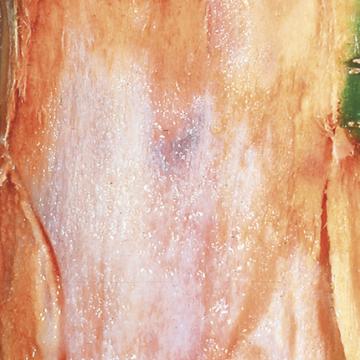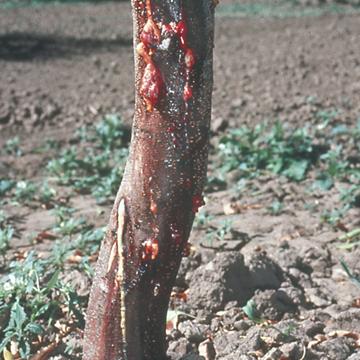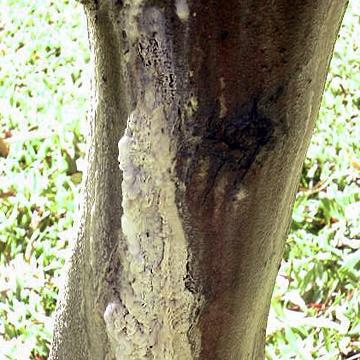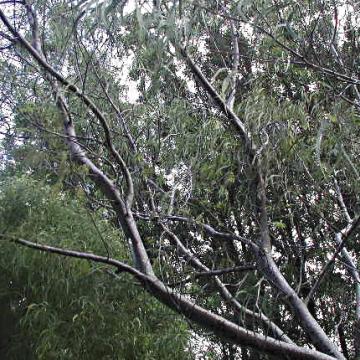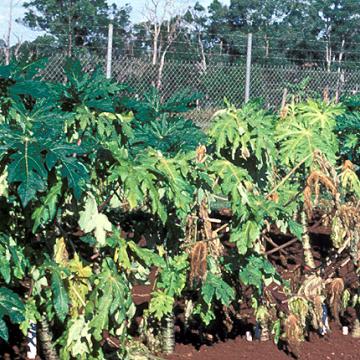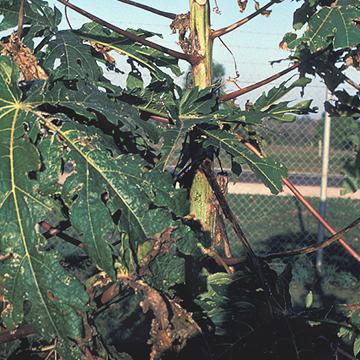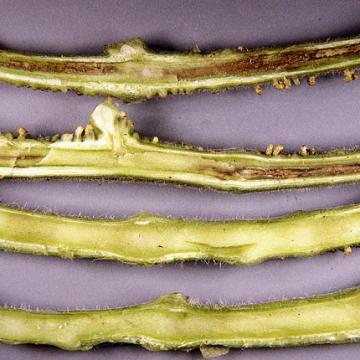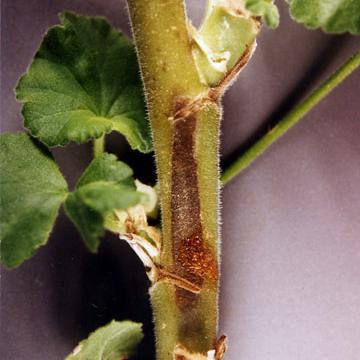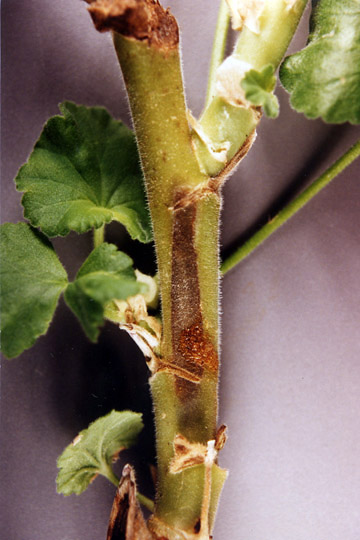DISEASE: Foamy canker
HOST: Almond
White, macerated tissues near cambium region is characteristic of disease. Foam is usually associated with cankers. The disease is suspected to be bacterial but the causal agent has not been identified.

Foamy canker | Almond
DISEASE: Foamy canker
HOST: Almond (Prunus dulcis)
PATHOGEN: Causal agent unknown
SOURCE: B. Teviotdale
DISEASE: Foamy canker
HOST: Almond
Amber red-colored ooze sliding down the trunk. The causal agent has not been identified.
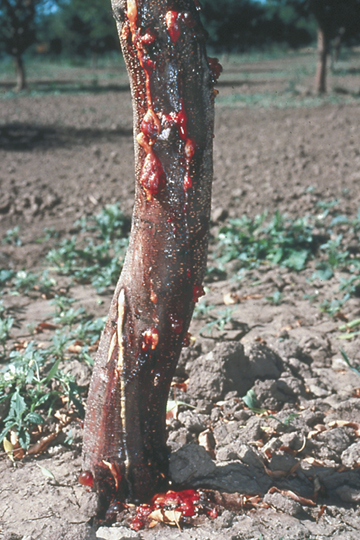
Foamy canker | Almond
DISEASE: Foamy canker
HOST: Almond (Prunus dulcis)
PATHOGEN: Causal agent unknown
SOURCE: B. Teviotdale
DISEASE: Foamy canker
HOST: Koa
Foamy canker of koa is associated with bacteria and yeast. The causal agent has not been identified.
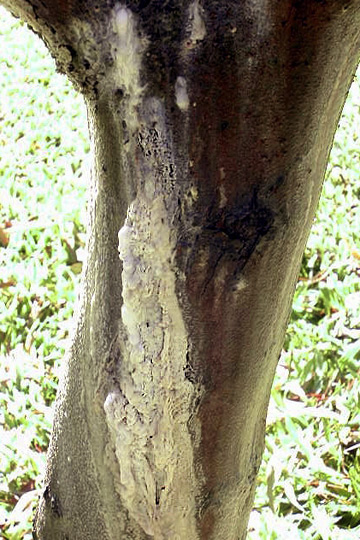
Foamy canker | Koa
DISEASE: Foamy canker
HOST: Koa (Acacia koa)
PATHOGEN: Causal agent unknown
SOURCE: H. Keyser
DISEASE: Foamy canker
HOST: Koa
Dieback of koa tree. The causal agent has not been identified.
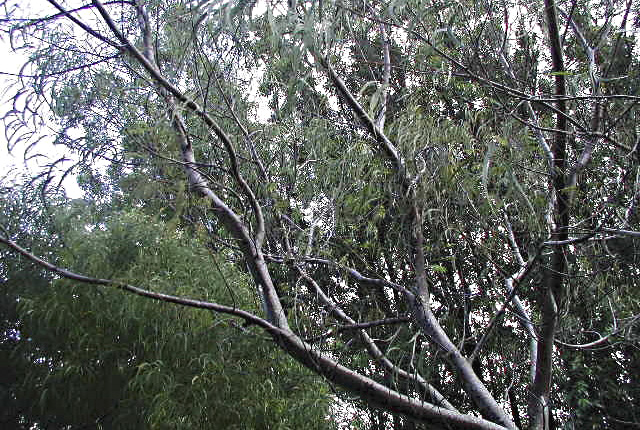
Foamy canker | Koa
DISEASE: Foamy canker
HOST: Koa (Acacia koa)
PATHOGEN: Causal agent unknown
SOURCE: H. Keyser
DISEASE: Papaya dieback
HOST: Papaya
Dieback is characterized by terminal necrosis and death of the young and old plants.
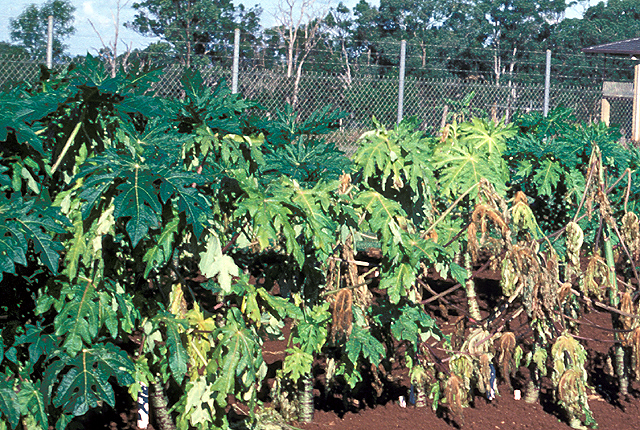
Papaya dieback | Papaya
DISEASE: Papaya dieback
HOST: Papaya (Carica papaya)
PATHOGEN: 'Candidatus Phytoplasma australiense'
PATHOGEN SYNONYM: Phytoplasma Stolbur group
SOURCE: D. Teakle
DISEASE: Papaya dieback
HOST: Papaya
Death of growing point, a symptom of the disease.
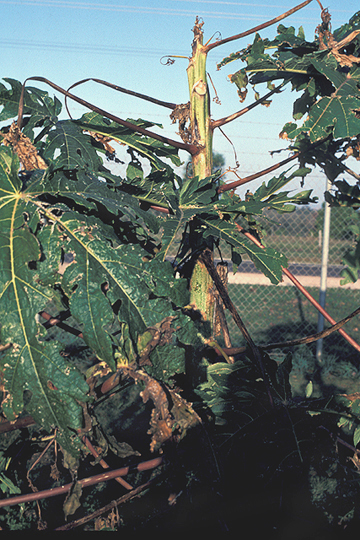
Papaya dieback | Papaya
DISEASE: Papaya dieback
HOST: Papaya (Carica papaya)
PATHOGEN: 'Candidatus Phytoplasma australiense'
PATHOGEN SYNONYM: Phytoplasma Stolbur group
SOURCE: D. Teakle
DISEASE: Pith necrosis
HOST: Geranium
Geranium with wilted, yellow necrotic leaves.
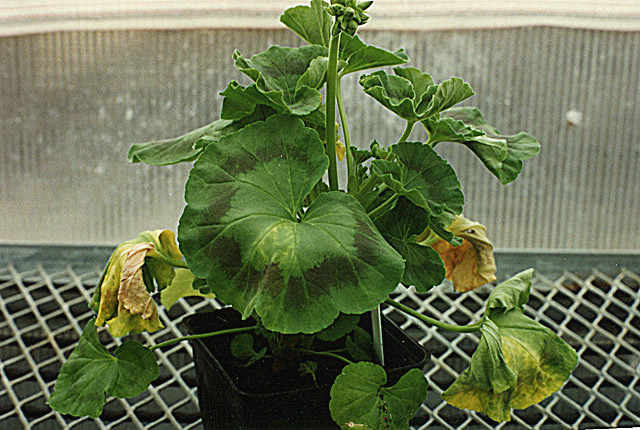
Pith necrosis | Geranium
DISEASE: Pith necrosis
HOST: Geranium (Pelargonium sp.)
PATHOGEN: Pseudomonas corrugata
SOURCE: A. Magyarosy, D. Thomas
DISEASE: Pith necrosis
HOST: Geranium
Pitted and hollow stems, one of the disease symptoms.

Pith necrosis | Geranium
DISEASE: Pith necrosis
HOST: Geranium (Pelargonium sp.)
PATHOGEN: Pseudomonas corrugata
SOURCE: A. Magyarosy, D. Thomas


